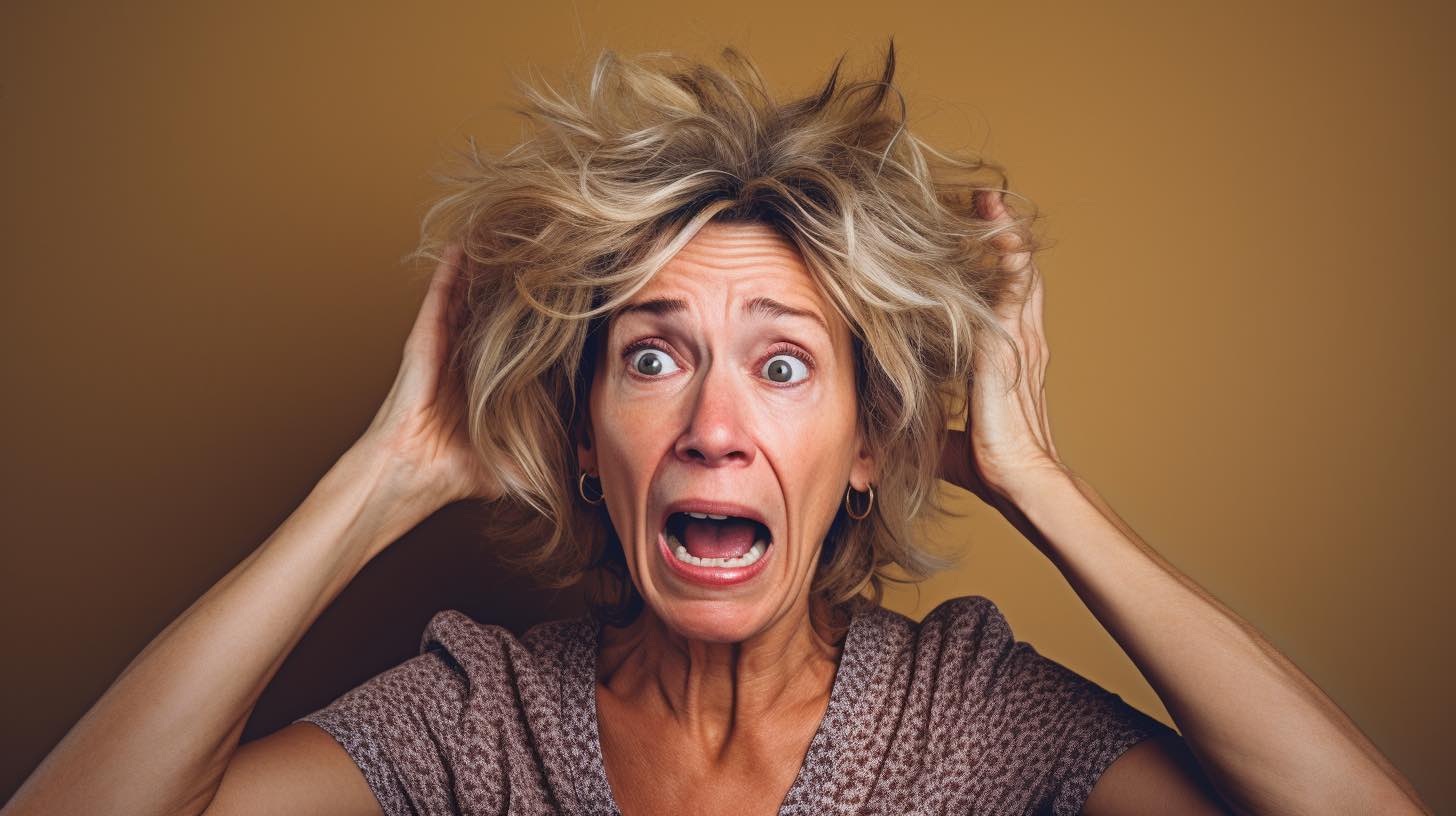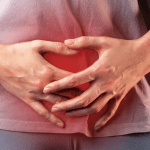The Role of Oestrogen in Bladder Health
Oestrogen plays a crucial role in maintaining the health and function of the female bladder. This hormone helps to keep the tissues of the bladder and urethra – the tube through which urine exits the body – healthy and elastic. It also supports the strength of the pelvic floor muscles, which are essential for bladder control. During the reproductive years, adequate levels of oestrogen contribute to the proper functioning of the urinary system.
Pelvic Relaxation and Its Impact on Incontinence
As women age, the pelvic floor muscles can weaken, a condition often referred to as pelvic relaxation. This weakening can lead to a loss of support for the bladder and urethra, resulting in urinary incontinence. Factors such as childbirth, obesity, and chronic coughing can exacerbate this condition, making it more likely for a woman to experience incontinence during menopause.
The Decline of Oestrogen During Menopause
Menopause marks the end of a woman’s reproductive years and is characterized by a decline in oestrogen production. This hormonal change can lead to thinning of the urethral tissues and further weakening of the pelvic floor muscles. The decrease in oestrogen levels is a significant factor contributing to the increased prevalence of urinary incontinence among postmenopausal women.
Long-Term Effects on Bladder Control
The long-term effects of menopause on bladder control can be significant. Without the protective effects of oestrogen, women may experience various types of incontinence, such as stress incontinence – leakage during activities that increase abdominal pressure – and urge incontinence – a sudden, intense need to urinate. Over time, these conditions can affect a woman’s quality of life, leading to social embarrassment, reduced physical activity, and emotional distress.
In conclusion, understanding the relationship between menopause and incontinence is essential for managing this common condition. Recognizing the role of oestrogen in bladder health, the impact of pelvic relaxation, and the long-term effects of hormonal changes can help women and healthcare providers develop effective strategies for prevention and treatment.
Types of Urinary Incontinence During Menopause
Stress Incontinence and Its Triggers
Stress incontinence is the most prevalent form of urinary incontinence in menopausal women. It is characterized by the involuntary leakage of urine during activities that increase abdominal pressure, such as coughing, sneezing, laughing, or physical exertion. The underlying cause is often a weakening of the pelvic floor muscles and the urethral sphincter, which can be exacerbated by the hormonal changes associated with menopause. These triggers put pressure on the bladder, leading to accidental urine release.
Urge Incontinence: Causes and Symptoms
Urge incontinence, also known as overactive bladder, is marked by a sudden and intense need to urinate, followed by involuntary urine leakage. The causes can include bladder irritants, neurological conditions, or bladder abnormalities. Symptoms often involve a frequent need to urinate, waking up multiple times at night to go to the bathroom, and the inability to delay urination long enough to reach a restroom.
Overflow Incontinence and Bladder Issues
Overflow incontinence occurs when the bladder cannot empty properly, leading to constant dribbling of urine or a weak stream. This type of incontinence is less common in women but can be due to factors such as medications, nerve damage, or obstructions. Women with overflow incontinence may experience a sensation of incomplete bladder emptying and frequent urination in small amounts.
Comparing Incontinence Types in Menopausal Women
Comparing the types of incontinence, stress incontinence is often related to physical changes and weakened pelvic muscles, urge incontinence is typically associated with bladder function and nerve signaling, and overflow incontinence is connected to the bladder’s inability to empty. Menopausal women may experience one type or a combination, known as mixed incontinence. Understanding the differences is crucial for accurate diagnosis and effective treatment.
Risk Factors and Prevalence
Demographic Factors Influencing Incontinence
Urinary incontinence (UI) during menopause is a multifaceted issue influenced by various demographic factors. Age is a significant factor, with the prevalence of UI increasing as women age, particularly during the postmenopausal years. The hormonal changes associated with menopause, including the decline in estrogen levels, exacerbate the weakening of the pelvic floor muscles and connective tissue, leading to a higher risk of incontinence.
Additionally, ethnicity and genetic predispositions play a role in the likelihood of experiencing menopause-related incontinence. Studies have shown variations in UI prevalence across different ethnic groups, suggesting that genetic factors, along with cultural and lifestyle differences, may influence the risk and experience of UI.
Lifestyle and Health Conditions as Risk Factors
Lifestyle choices and pre-existing health conditions also contribute to the risk of developing UI during menopause. Obesity, characterized by a Body Mass Index (BMI) of 30 or higher, significantly increases intra-abdominal pressure, which in turn places additional stress on the bladder and pelvic floor muscles. Physical inactivity can lead to a weakening of the pelvic muscles, further elevating the risk of incontinence.
Chronic coughing, often associated with smoking or respiratory conditions, can cause repetitive strain on the pelvic floor, while conditions such as diabetes can affect nerve function and bladder control. Previous pelvic surgeries, including hysterectomies, may also impact the structural support of the bladder and urethra, leading to a higher incidence of UI.
Statistical Overview of Menopause Incontinence
The prevalence of urinary incontinence among menopausal women varies widely, with estimates ranging from 20% to 70%, depending on the population studied and the criteria used for diagnosis. Stress urinary incontinence (SUI) is the most common type reported during menopause, followed by urge incontinence (UUI) and mixed incontinence (MUI).
Research indicates that up to one-third of menopausal women may experience some degree of UI, with many cases going unreported due to stigma or the misconception that it is an inevitable part of aging. The impact of UI on quality of life can be profound, affecting emotional well-being, social interactions, and daily activities.
Conclusion: Understanding the demographic factors, lifestyle choices, and health conditions that contribute to menopause-related incontinence is crucial for developing targeted prevention strategies and effective management plans to improve the quality of life for affected women.

From unhappy, dry, and sandpaper to silky, smooth and feeling good. That’s Cleo. Cleo is a 100% natural labial balm to moisture and soothe “your other lips”. Cleo is chemical-free, water-free, pH optimized and helps maintain and restore your delicate labial skin’s natural flora. Ideal for daily use or as needed. Get the most silky, lovable lips ever.
Diagnosis and Evaluation
Medical Assessment for Incontinence
The initial step in diagnosing menopause-related incontinence involves a comprehensive medical assessment. This includes a detailed history of the patient’s symptoms, lifestyle factors, and any other health conditions that may contribute to bladder issues. The clinician will inquire about the onset, duration, frequency, and severity of incontinence episodes, as well as any associated symptoms such as urgency, nocturia, or pain. It is also essential to review the patient’s obstetric and gynecological history, including the number of pregnancies, childbirth experiences, and any previous pelvic surgeries, as these factors can influence bladder health.
Tests and Procedures for Bladder Function
Following the medical assessment, several tests and procedures may be employed to evaluate bladder function and identify the type of incontinence. These may include:
- Urinalysis: A routine test to check for signs of infection, blood, or other abnormalities in the urine.
- Bladder Diary: Patients may be asked to keep a record of fluid intake, urination times, volume, and incontinence episodes to provide insight into bladder patterns.
- Postvoid Residual Measurement: This test measures the amount of urine left in the bladder after voiding, which can indicate issues with bladder emptying.
- Urodynamic Testing: A series of tests that assess how well the bladder and urethra store and release urine. This can include uroflowmetry, cystometry, and pressure-flow studies.
Identifying the Type of Incontinence
Based on the findings from the medical assessment and testing, healthcare providers can determine the type of incontinence affecting the patient. Stress incontinence is characterized by urine leakage during activities that increase abdominal pressure, such as coughing or exercising. Urge incontinence involves a sudden, intense urge to urinate followed by involuntary leakage. Overflow incontinence occurs when the bladder does not empty completely, leading to frequent dribbling. Identifying the correct type of incontinence is crucial for developing an effective management plan tailored to the patient’s specific needs.
Management and Treatment Options
Non-Surgical Interventions
For many women experiencing menopause-related incontinence, non-surgical interventions are the first line of treatment. These interventions focus on strengthening the pelvic floor muscles and modifying behaviors that contribute to incontinence. Pelvic floor muscle training, commonly known as Kegel exercises, is a cornerstone of non-surgical treatment. These exercises can significantly improve symptoms by providing better support for the bladder and urethra. Biofeedback and electrical stimulation may also be used to enhance pelvic floor muscle training effectiveness.
Behavioral modifications are another critical aspect of non-surgical intervention. Bladder training, which involves scheduled voiding and gradually increasing the time between voids, can help manage urge incontinence. Fluid and dietary management, such as reducing caffeine and alcohol intake, can also alleviate symptoms by decreasing bladder irritation.
Surgical Treatments for Severe Cases
When non-surgical treatments are insufficient, surgical options may be considered for severe cases of menopause-related incontinence. Midurethral slings, such as the tension-free vaginal tape (TVT) and transobturator tape (TOT), are common procedures for stress incontinence. These minimally invasive surgeries support the urethra and can provide long-term relief. For those with more complex conditions, procedures like sacral neuromodulation or the use of bulking agents may be appropriate. It is essential to discuss the potential risks and benefits of surgical treatments with a healthcare provider.
Lifestyle Changes and Home Remedies
Lifestyle changes can play a significant role in managing menopause-related incontinence. Weight management is crucial, as excess weight can increase pressure on the bladder. Regular physical activity, including pelvic floor exercises, can improve muscle tone and reduce incontinence episodes. Additionally, avoiding bladder irritants, such as spicy foods, acidic fruits, and artificial sweeteners, can help control symptoms. Smoking cessation is also recommended, as smoking can worsen incontinence by causing coughing and damaging connective tissue.
Hormone Replacement Therapy and Its Efficacy
Hormone replacement therapy (HRT) may be considered to alleviate menopause-related incontinence, particularly when symptoms are linked to decreased estrogen levels. Topical estrogen, applied directly to the vaginal area, can help improve the health of urethral and vaginal tissues, potentially reducing incontinence episodes. However, the efficacy of HRT can vary, and it is not suitable for everyone. Women should discuss the benefits and risks of HRT with their healthcare provider, considering personal health history and the severity of symptoms.
In conclusion, a multifaceted approach to managing menopause-related incontinence can significantly improve quality of life. Non-surgical interventions, lifestyle modifications, and, when necessary, surgical treatments and hormone replacement therapy, should be tailored to each individual’s needs and medical history. With proper management, many women can achieve substantial relief from incontinence symptoms.
By the way, something for you, a little gift!!!
I am just in the middle of publishing my book. It’s about How women can balance their hormones. One part is about food and diet, of course.
Follow this link and enter your email.
I will send you this part of the book for free once the book is published. It has many concrete, practical tips and recipes and will help you feel better during menopause or times of Big hormonal fluctuations.
Annette, Damiva Lead for Health & Wellness

Preventive Measures and Lifestyle Modifications
Dietary Adjustments to Alleviate Symptoms
One of the first steps in managing menopause-related incontinence involves making dietary adjustments. Fluid intake is crucial; however, it’s important to balance the amount and timing. Drinking more fluids during the morning and less at night can help reduce nocturia, the need to urinate at night. Avoiding bladder irritants such as caffeine, alcohol, and carbonated beverages can also alleviate symptoms. Foods that can irritate the bladder, like chocolate, should be consumed in moderation. A trial period of elimination can help determine which foods and drinks exacerbate incontinence, allowing for a tailored dietary plan that minimizes symptoms.
Exercise and Physical Therapy
Physical activity plays a significant role in strengthening the pelvic floor muscles, which are vital for bladder control. Kegel exercises, which involve contracting and relaxing the pelvic floor muscles, can be particularly effective. These exercises should be performed several times a day, in various positions such as lying down, sitting, and standing. Additionally, engaging in regular physical activity can help maintain a healthy weight, which reduces pressure on the bladder and pelvic floor muscles.
Behavioral Techniques for Bladder Control
Behavioral techniques such as bladder training can be beneficial. This involves setting a schedule for urination and gradually increasing the time between bathroom visits, which can help the bladder to hold more urine and reduce urgency. If an urge arises before the scheduled time, techniques like deep breathing can be used to manage the sensation until the scheduled time is reached. Consistency and patience are key, as it may take several attempts to see improvement.
The Importance of Regular Medical Check-Ups
Regular medical check-ups are essential for monitoring bladder health and managing incontinence. Health care providers can offer guidance on lifestyle modifications, assess the effectiveness of behavioral techniques, and adjust treatment plans as needed. They can also check for any underlying conditions that may contribute to incontinence. By maintaining open communication with a health care provider, individuals can ensure they are taking the most appropriate and effective steps to manage their symptoms.
Implementing these preventive measures and lifestyle modifications can significantly improve the quality of life for women experiencing menopause-related incontinence. While it may require some adjustments and dedication, the benefits of reduced symptoms and increased control over bladder function are well worth the effort.

Popular Read
Psychosocial Impacts and Support Systems
Emotional and Social Consequences of Incontinence
Menopause-related incontinence can have profound emotional and social consequences for women. The involuntary loss of bladder control can lead to feelings of shame, embarrassment, and anxiety, often causing women to withdraw from social activities and relationships. This isolation can further exacerbate feelings of loneliness and depression, impacting overall mental health. The stigma associated with incontinence also contributes to a reluctance to seek help, leaving many women to suffer in silence.
Support Groups and Counseling
Support groups and counseling services play a critical role in helping women cope with menopause-related incontinence. These resources provide a safe space for women to share their experiences and feelings, reducing the sense of isolation. Counseling, whether individual or group-based, can offer strategies for managing the psychological impact of incontinence, including techniques for stress management and cognitive-behavioral therapy to address negative thought patterns.
Educational Resources and Community Awareness
Increasing community awareness and providing educational resources about menopause incontinence are essential for reducing stigma and encouraging women to seek assistance. Educational materials can inform women about the physiological changes during menopause, management strategies, and available treatment options. Community programs can also promote understanding among family members and the public, fostering a more supportive environment for affected women.
Family and Caregiver Roles in Management
Family members and caregivers play a pivotal role in supporting women with menopause-related incontinence. Their involvement can range from providing emotional support to assisting with daily management strategies. It is important for caregivers to be informed and empathetic, recognizing the sensitive nature of incontinence and offering reassurance. Additionally, they can help in implementing home modifications and encouraging consistent medical follow-ups.









